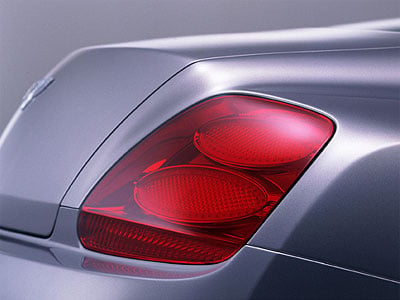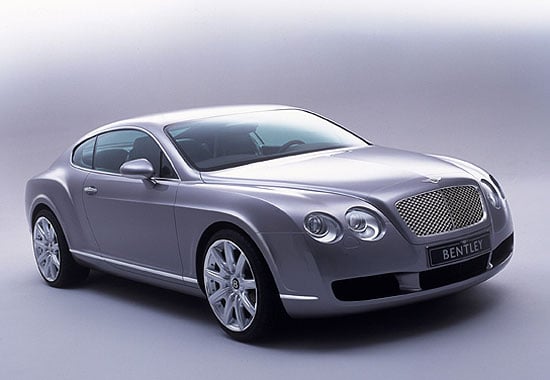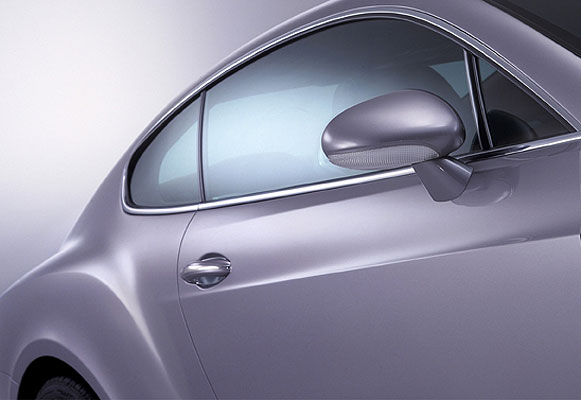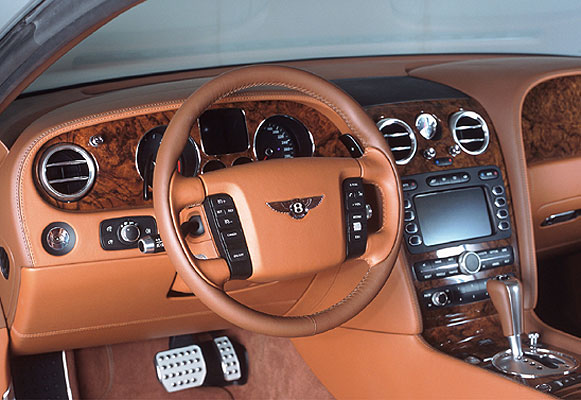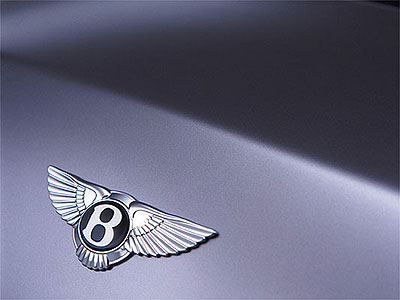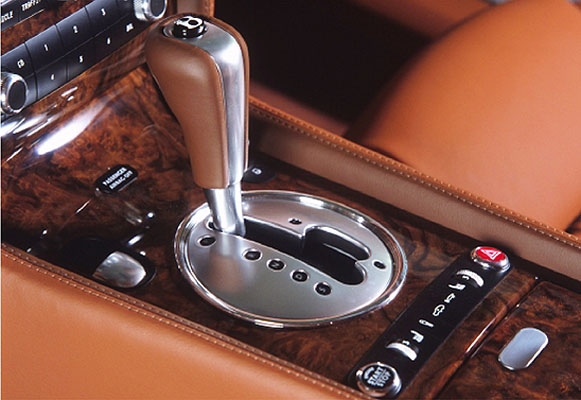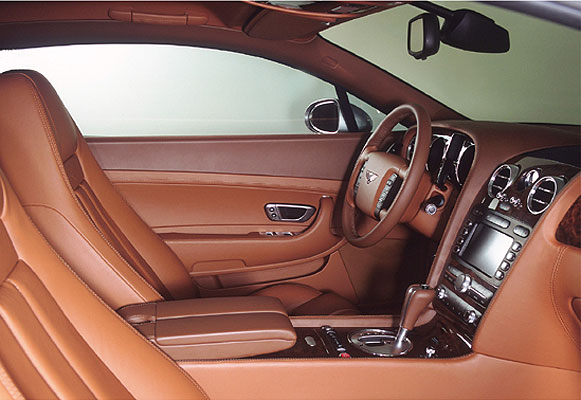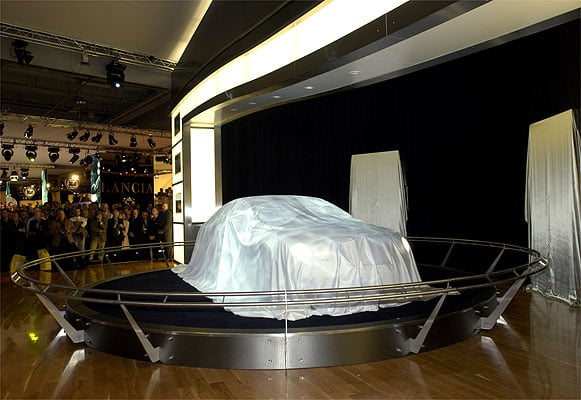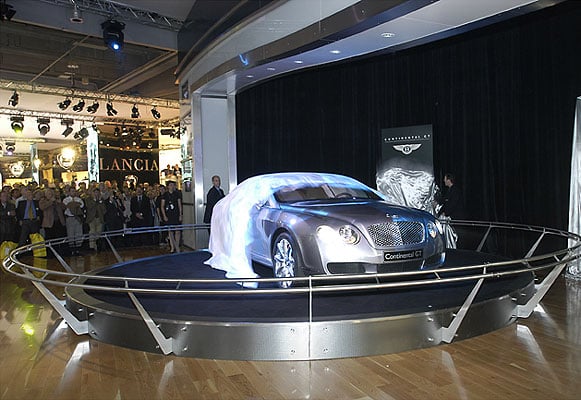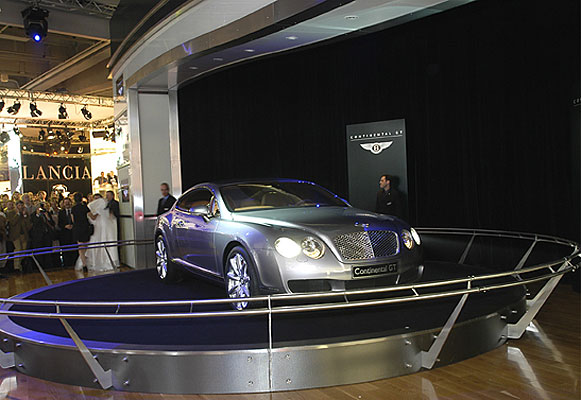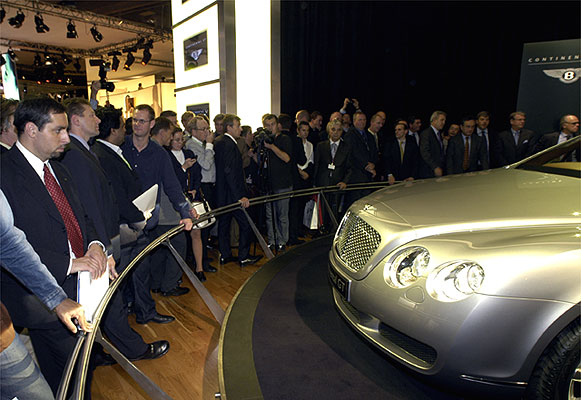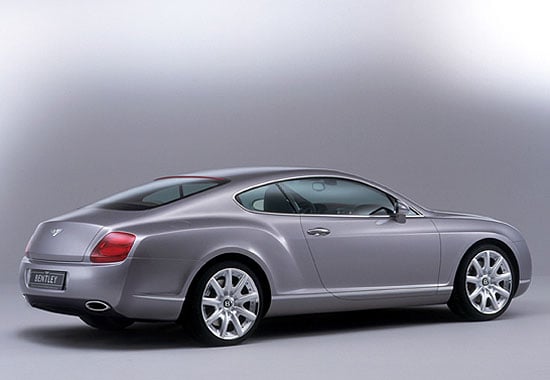New Car; New Customers
Text: Charis Whitcombe
Photo: Bentley Media
The new Bentley Continental GT, launched at the Paris Motor Show in September, is not merely the fastest car in the company’s 83-year history. It will also, says Bentley, be the fastest genuine four-seater coupé in the world, with a top speed of more than 180mph and 0-62mph in under five seconds. The business case for creating such a car hinges on what Bentley perceives as a gap in the upper luxury coupé market. The Continental GT Coupé is designed to combine true supercar performance with the practicality of four seats and plenty of luggage space; powerful, driveable and overtly luxurious.
Only 25 per cent of buyers are predicted to be existing Bentley customers; the remaining 75 per cent might have baulked at spending over £150,000 on a car but will be attracted by the lower price as well as the practicality of the new coupe. (When the new Bentley goes on sale in the second half of 2003, it is expected to cost around £110,000.) Yet, at the same time, Bentley believes that it is more aware of the importance of its heritage than at any time since it was bought by Rolls-Royce in 1931. Bentley’s expanding role in motorsport, for example, pays tribute to its history as well as communicating with its new, younger customers - customers who are described as “car-oriented” people; the sort of people who watch the Le Mans 24 Hours.
Despite the Continental GT meaning a significant increase in production at Crewe, Bentley intends to remain small. The global dealership network currently stands at 121 and is unlikely to be expanded beyond 150 in the foreseeable future. “Customers know they are part of a very small and ultra-exclusive family of Bentley cognoscenti,” we are told. “And it is creating a business that runs successfully at such a personal level right from the factory gates at Crewe, where customers can come and watch their car being built, all the way to their own front door that completes the environment that any Bentley driver can expect to enjoy.”
A Dream Come True
There have been dreams of building a new Bentley Coupe at Crewe for more than 20 years, yet it is only with VW’s £500 million cash injection that this has at last become reality. Aside from financial input, the all-new Bentley has benefited from the parent company in other ways. The basic architecture of the W12 engine, for example, comes from elsewhere in the VW Group. And this engine is important not only to the car’s performance, but also to its interior comforts. The thinking goes something like this:
In order to create a car with a spacious interior but relatively compact overall dimensions, you need to think hard about what’s under the bonnet. The secret of the Continental GT's interior space is, in a sense, its engine. Instead of using the two, long, 6-cylinder banks of a V12, the W12’s narrow angle (15deg) V6 formations result in an exceptionally short powerplant – the shortest 12-cylinder engine, in fact, on the market. This frees up space for the car's interior. Further help is provided by history. One key to maximising interior space is raising the so-called 'H' point - the position of the driver’s hips - which in a Bentley is higher than in a conventional supercar. Advantages include a commanding driving position (another Bentley hallmark) and more room in the rear seat.
Another notable feature is that the cabin is pillarless. The omission of a B-pillar is not only aesthetic but the unbroken expanse of glass from the front to the rear of the cabin also provides a feeling of great space and airiness – particularly for passengers in the back. The 355 litre luggage capacity, too, required fresh thinking and innovation. In cars of this size, the fuel tank is usually between the boot and rear seat but by locating the Continental GT’s tank under the floor it minimises the overall length of the car, increases interior space and means that long items (such as skis) can extend through the boot and into the rear cabin.
External Styling
Back in August 1999, newly appointed head of design, Dirk van Braeckel was briefed to prepare a concept for an all new Bentley coupé: one that would use 80 years of Bentley design as its inspiration, yet look only to the future in its shape.
“What you are looking for,” says van Braeckel, “are the things that gave those cars such presence and a stance that shouted 'Bentley' at anyone who looked at them.” Hence the new car has a short front overhang and an overtly dominant bonnet expressed by the unusually large distance between the front axle line and the A-pillar. The pillarless cabin itself is sleek and compact while the rear haunches are taut and pronounced, giving the impression of a crouching animal ready to pounce. The car’s overall form is curvaceous and sinuous with a form that “appears and disappears like muscle on a gymnast's arm, sculptural yet lean”.
Finally there was what van Braeckel refers to as the car's “jewellery”. It was decided that brightwork should be minimised, limited to the door surrounds, a finish along the sill, the exhaust surrounds and radiator grille. But the headlamps themselves assume a dominant role, with the inner units being the larger of the two pairs both in acknowledgment of past Bentleys, and to draw attention to the most distinctive Bentley feature of all: the matrix radiator grille. It must have been a temptation, with such a high performance car, to clamp a vast rear spoiler to the bootlid for stability at speed: but a more elegant solution was found. The Continental GT’s rear spoiler is integrated into the car where the rear window meets the bootlid; it is for the most part invisible, deploying automatically at high speed. Another unique feature we particularly like is the Central High Mounted Stop Lamp, known somewhat awkwardly in the industry as the CHMSL. Regulations require the CHMSL to occupy a certain area, but do not dictate its shape. So, some free thinking later and the Continental GT is fitted with a CHMSL that is just 3mm tall but fully one metre wide. Clever.

The Facts
Only limited technical details have so far been released by Bentley, so we are unable to publish the full facts. However…
| Engine: | 6-litre, twin-turbocharged, W12 |
| Power: | “more than 500bhp” |
| Torque: | enough to provide “relentless acceleration from 2000rpm to its red-line” |
| Transmission: | paddle-operated, 6-speed ZF automatic gearbox with four-wheel drive (first time for a Bentley) |
| Suspension: | Front: double wishbones with air springs. Rear: multi-link rear axle with air springs |
| Brakes: | Front and rear: ventilated discs (with Bosch anti-lock system, Brake Assist and Emergency Brake Force Distribution) |
| Wheels/tyres: | still in development, but 19in wheels likely to be standard |
| Official performance figures: | 0-62mph: less than 5sec Top speed: more than 180mph |
| Price and availability: | Available in UK from second half of 2003. Price tba but expected to be around £110,000. |

Gallery
